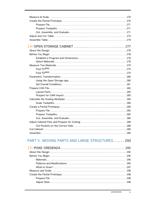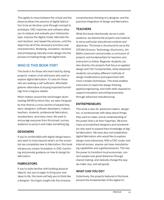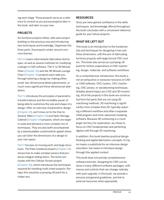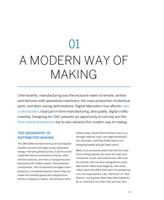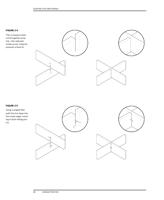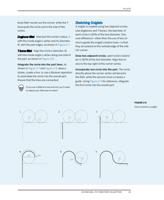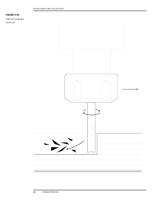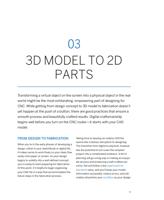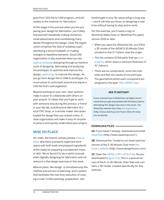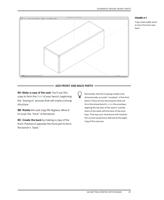
physical workflow, an applied context for
design thinking, and the methods for mastering
essential CNC fabrication techniques. After
successfully completing several projects in this
book, you will have a solid understanding of
CNC fundamentals. Through these projects, we
also present AtFAB’s underlying logic, in an
effort to reveal the considerations that factored
into our decision-making process as we devel-
oped our designs. We want this combination of
fundamentals and process to give you an
understanding of how to propose, prototype,
fabricate, and share your own designs.
LASER CUTTERS VERSUS ROUTERS
If you don’t have access to a CNC router that’s capa-
ble of cutting full 4′ x 8′ sheets, don’t despair—this
book is still for you! If you have a laser cutter or
small format CNC, it is entirely possible to work
through all of the projects and exercises in this
book.
Each project in this book can be easily scaled down
to a smaller size, and produced on a desktop
machine. As discussed in “Scale Prototypes” on
page 137, it’s common to make scale models of
projects before building them at full size from more
expensive materials. This chapter also provides
step-by-step instructions on how to scale design
files for cutting prototypes. You’ll also find that each
project in this book covers scale prototyping partic-
ulars relative to each specific design.
HOW THIS BOOK IS ORGANIZED
While this is a project-focused book, we also
introduce design principle and delve into essen-
tial concepts for using software, hardware, and
physical materials. The book begins with an
overview of CNC joinery concepts, techniques,
and software exercises, enabling you to acquire
essential knowledge even if you don’t have
immediate access to a full-size CNC router. A
series of eight AtFAB furniture projects follow,
starting small and simple and advancing in
technique, scale, and complexity.
DESIGNING FOR FABRICATION
Part I begins with an explanation of the larger
implications of design for CNC, and how it can
scale to offer an efficient, environmentally
sound, and economically democratic model for
manufacturing. It introduces the broad con-
cepts of designing for CNC through the explan-
ation of AtFAB’s development from a joinery
detail into a line of furniture. This part culmi-
nates with two CAD exercises: the first exercise
(Chapter 3) introduces software techniques for
working in three and two dimensions in order to
properly set up a digital fabrication workflow.
The second (Chapter 4) takes you through the
process of designing a three-dimensional piece
of furniture made of flat parts.
VIRTUAL MEETS PHYSICAL
Part II offers essential knowledge for achieving
digital craftsmanship, as you transition from
the virtual CAD model to an actual physical
object. It starts with an introduction on materi-
als and techniques for reconciling the perfec-
tion of a digital model with the inherent
variability of natural materials. It follows with
Chapter 6, which offers details about the CNC
router itself and the principles of proper
machining.
Chapter 7 walks you through an exercise that
begins with setting up a digital file for CNC fab-
rication and leads into two introductory CNC
projects. All exercises up to this point can be
accomplished without access to a CNC router.
The AtFAB Stool and Coffee Table projects are
modest, simple projects that take you through
the CNC fabrication process from start to fin-
ish. Each goes in depth about the steps, as well
as the things that could possibly go wrong dur-
xx
DESIGN FOR CNC













